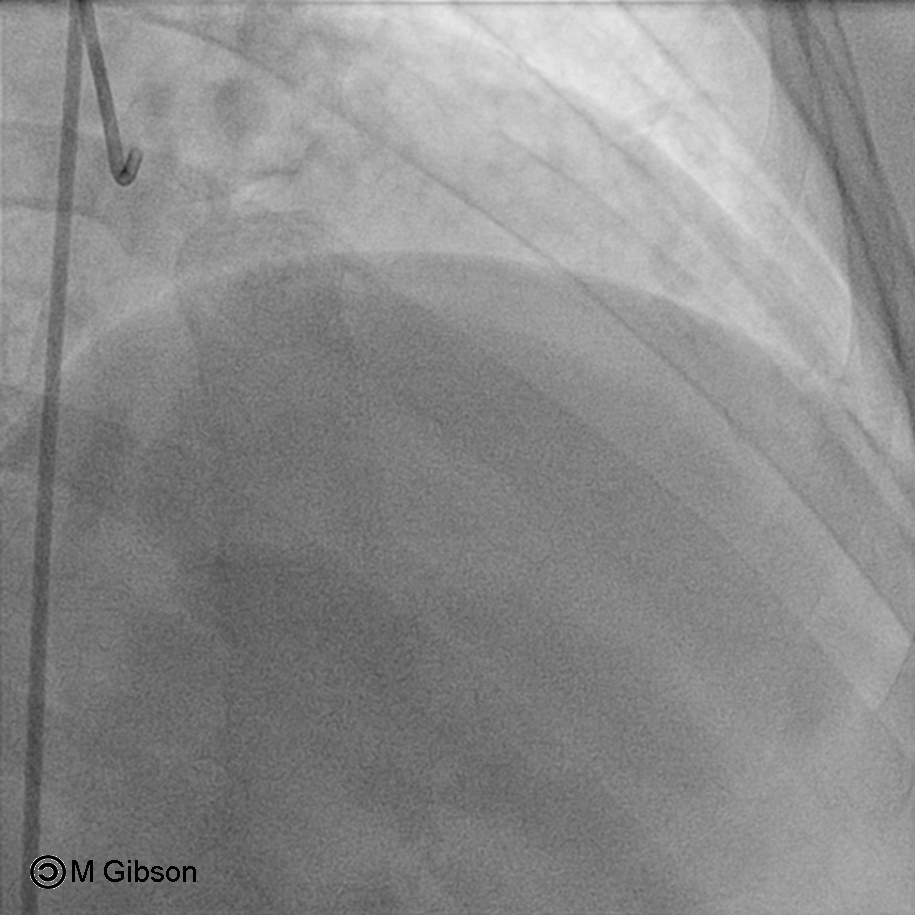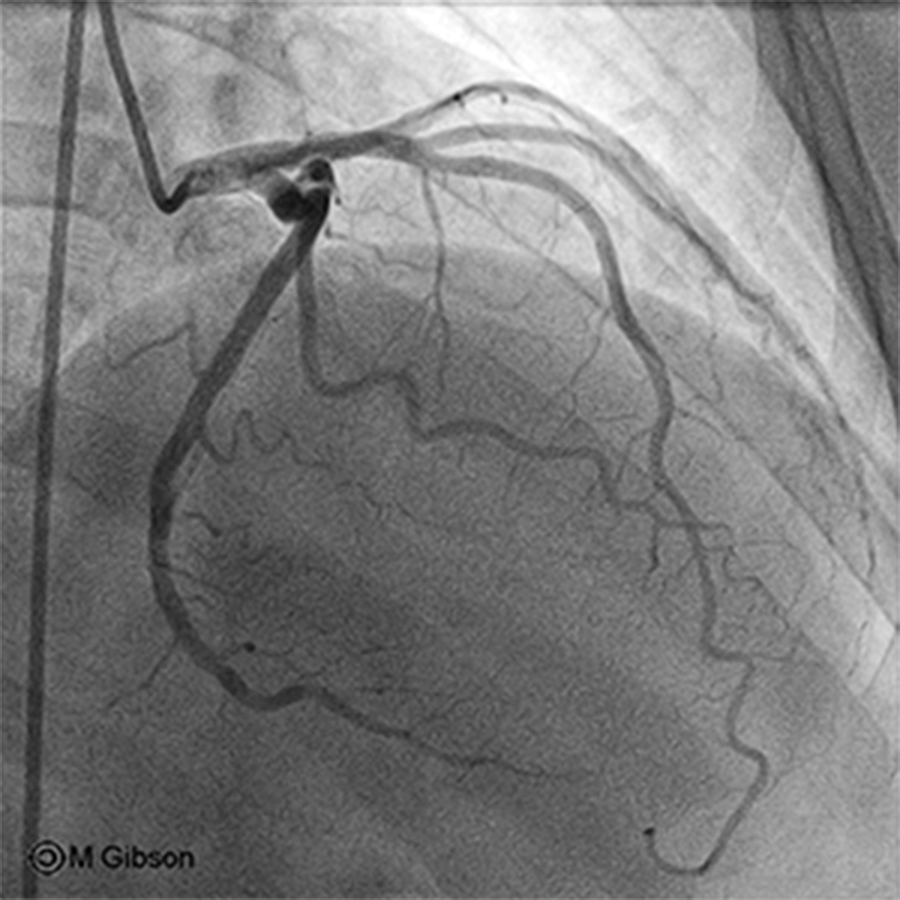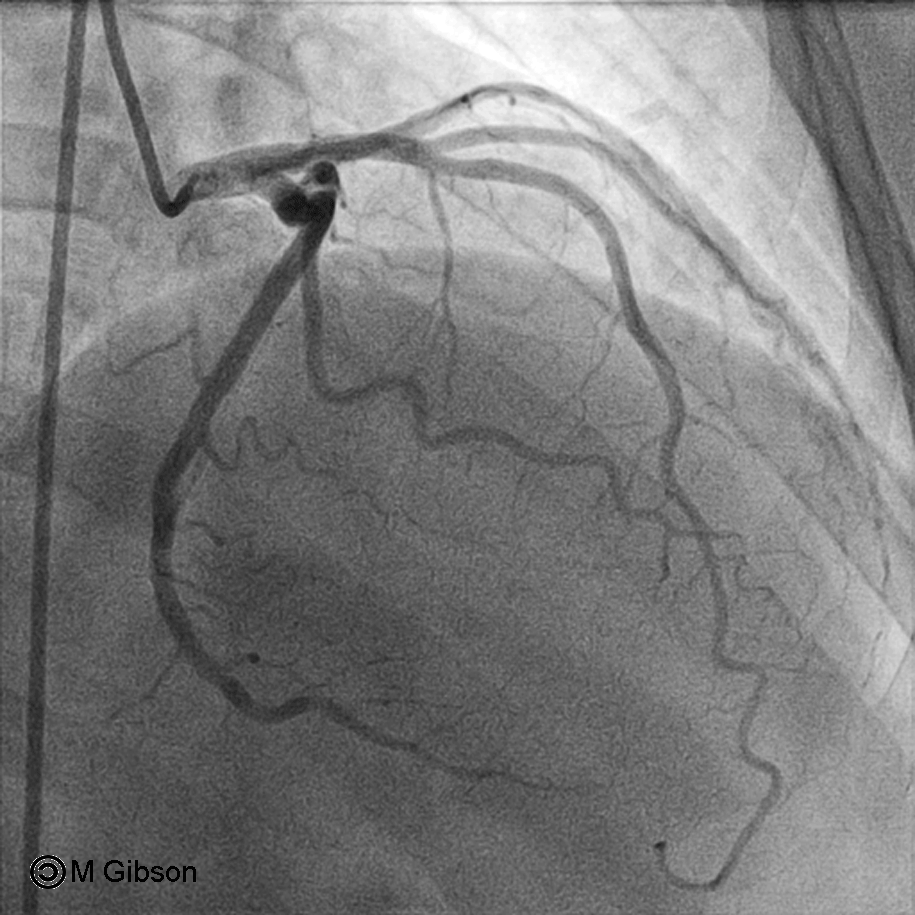Left anterior descending artery
|
Coronary Angiography | |
|
General Principles | |
|---|---|
|
Anatomy & Projection Angles | |
|
Normal Anatomy | |
|
Anatomic Variants | |
|
Projection Angles | |
|
Epicardial Flow & Myocardial Perfusion | |
|
Epicardial Flow | |
|
Myocardial Perfusion | |
|
Lesion Complexity | |
|
ACC/AHA Lesion-Specific Classification of the Primary Target Stenosis | |
|
Lesion Morphology | |
Editor-In-Chief: C. Michael Gibson, M.S., M.D. [1] Synonyms and keywords: LAD, anterior interventricular branch of the left coronary artery, anterior descending branch
Overview
The LAD passes at first behind the pulmonary artery and then comes forward between that vessel and the left auricula to reach the anterior interventricular sulcus, along which it descends to the incisura apicis cordis. In 78% of cases, it reaches the apex of the heart. The LAD gives off two types of branches: septals and diagonals. In addition, the LAD can be divided into four segments (L1, L2, L3 and L4).
LAD Branches
The LAD gives off two types of branches: septals and diagonals.
Septal Arteries
- Septals originate from the LAD at 90 degrees to the surface of the heart, perforating and supplying the intraventricular septum.
- S1, S2 and S3 denotes the three largest septal arteries that branch off the LAD.
Diagonal Arteries
- Diagonals run along the surface of the heart and supply the lateral wall of the LV and the anterolateral papillary muscle. D1, D2 and D3 denotes the three longest diagonal arteries.
- The first diagonal artery (D1) is the first of the three longest branches off of the left anterior descending artery.
- The second diagonal artery (D2) is the second of the three longest branches off of the left anterior descending artery. In an RAO projection, this artery often arises where the left anterior descending angles toward the apex.
- The third diagonal artery (D3) is the third of the three longest branches off of the left anterior descending artery. In an RAO projection, this artery often arises where the left anterior descending angles toward the apex.
Shown below are an animated image and a static image depicting the LAD. The first image is an angiograhic view of the left system, the image at the right illustrates the septal and diagonal branches of the LAD.
LM= Left main; L1= Proximal left anterior descending artery ; L2= Mid left anterior descending artery; L3= Distal left anterior descending artery; L4= The left anterior descending artery terminus on the inferior wall; D1= First diagonal artery; D2= Second diagonal artery; D3= Third diagonal artery; S1, S2, S3= Septal arteries.
LAD Segments
The LAD can be divided into four main segments (L1, L2, L3 and L4) according to the origin of the septal arteries. The LAD segments are the following:
Proximal left anterior descending artery
The proximal left anterior descending artery is referred to as L1. It extends from the bifurcation of the left main coronary artery to the origin of the first septal artery.
Mid left anterior descending artery
The mid left anterior descending artery is referred to as L2. It extends from the origin of the first septal artery to the origin of the third septal artery.
Distal left anterior descending artery
The distal left anterior descending artery is referred to as L3. It extends from the origin of the third septal artery to the apex of the left ventricle. If there is no third septal branch, then the third segment begins halfway between S1 and the apex of the left ventricle.
The left anterior descending artery terminus on the inferior wall
The left anterior descending artery terminus on the inferior wall is referred to as L4. It represents the continuation of the left anterior descending artery beyond the apex of the left ventricle in the event that the LAD is a wrap around variant.
Shown below are an animated image and a static image depicting the LAD. The first image is an angiograhic view of the left system, the image at the right illustrates the different segments of the LAD (L1, L2, L3 and L4).
LM= Left main; L1= Proximal left anterior descending artery ; L2= Mid left anterior descending artery; L3= Distal left anterior descending artery; L4= The left anterior descending artery terminus on the inferior wall; D1= First diagonal artery; D2= Second diagonal artery; D3= Third diagonal artery; S1, S2, S3= Septal arteries.
Cardiac Supply
The LAD typically supplies 45-55% of the left ventricle (LV). The LAD supplies the anterolateral myocardium, apex, and interventricular septum.
- The septal arteries supply the intraventricular septum.
- The diagonal arteries supply the antero-lateral wall of the left ventricle.


